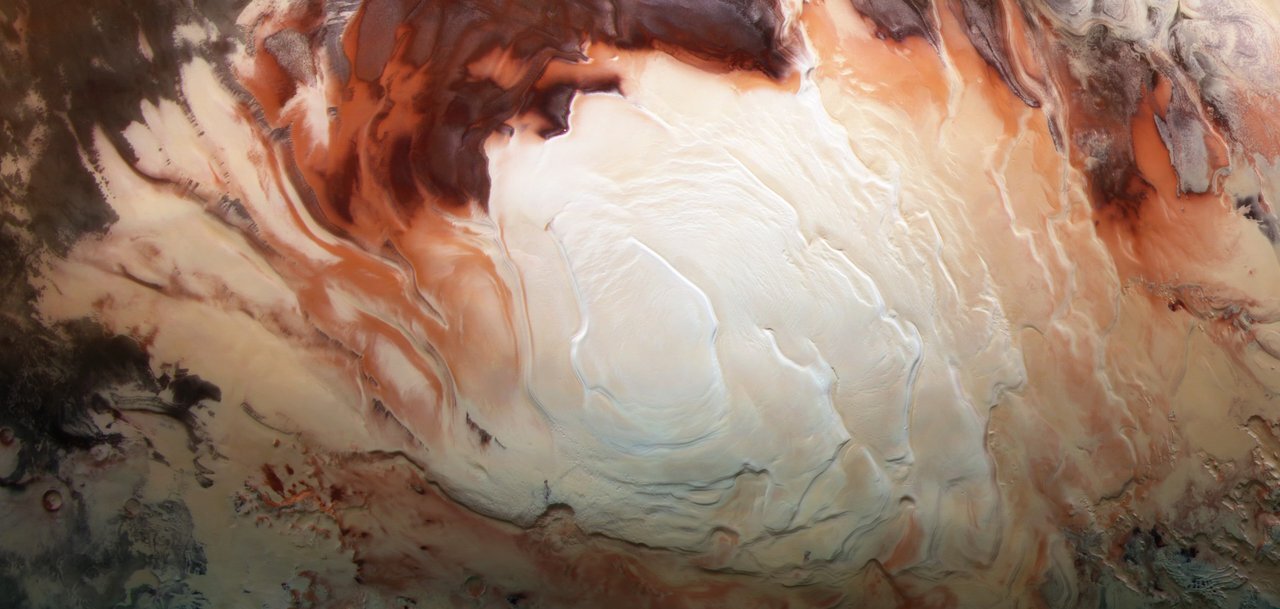Mars is a very cold and dry desert planet, but there are places to get water in the polar regions. This is because there is a glacier made of dry ice made by cooling water and carbon dioxide in the polar regions of Mars. However, unlike Earth, carbon dioxide is a cryogenic environment where it can exist as a solid, so the possibility of life is slim.
However, in 2018, scientists from the European Space Agency (ESA) analyzed radar data from the Mars Expression and published a study that showed that liquid substances seemed to be under the Martian Antarctic glacier. In fact, many lakes under glaciers have also been found on Earth. This is because no matter how cold the Antarctic is, water can melt underneath the glacier for several kilometers and form a lake by various heat sources such as friction between glaciers and bedrock. Therefore, the results of this study were considered theoretically sufficient. And if there is liquid water under the Martian Antarctic glacier and other energy sources exist, life can exist, so it has attracted academic attention.

Scientists at NASA’s Jet Propulsion Laboratory (JPL) secured additional Mars Advanced Radar for Subsurface and Ionospheric Sounding (MARSIS) radar data to verify the claim. Masis was developed to investigate geological conditions in orbit by measuring the degree of reflection of radar through the surface and ice. The degree of reflection of the radar varies greatly depending on the type of material, but also depending on whether it is a liquid or a solid. Therefore, you can check the lake under the thick ice.
The research team analyzed 44,000 data measured over 15 years in detail and found that there were not one but several radar signals suspected of being a lake under the Antarctic glacier. As a result of analyzing the lake candidates under dozens of glaciers, the research team noted that there are lakes in shallow places than expected. For example, the signal of the lake could be found even at a depth of 1.6km, which is estimated to be about -63℃.
If there is a real lake and it does not freeze at this temperature, it is likely salty water with a lot of minerals dissolved. Another possibility is that the temperature is much higher than expected due to heat sources caused by other geological activities such as volcanic activity and hot springs. Either way, the glacial lake at a relatively shallow depth will be an important goal for future Mars Antarctic exploration.
Scientists believe that ancient Mars was a warm, liquid water-rich environment like Earth. And just as life was born on Earth during this period, life may have been born on Mars. If Martian life existed in even a simple form of bacteria, one of the places that can maintain its existence so far is the isolated lake. However, in order to find out whether there is a real lake and what is in it, we have no choice but to drill it and examine the inside of the lake.
However, it is not an easy task to explore the inside of the lake through the ice so deep on Earth. Mars goes without saying. Thus, real exploration will be a distant future, but mankind will someday challenge this challenge to solve questions about life on Mars.
